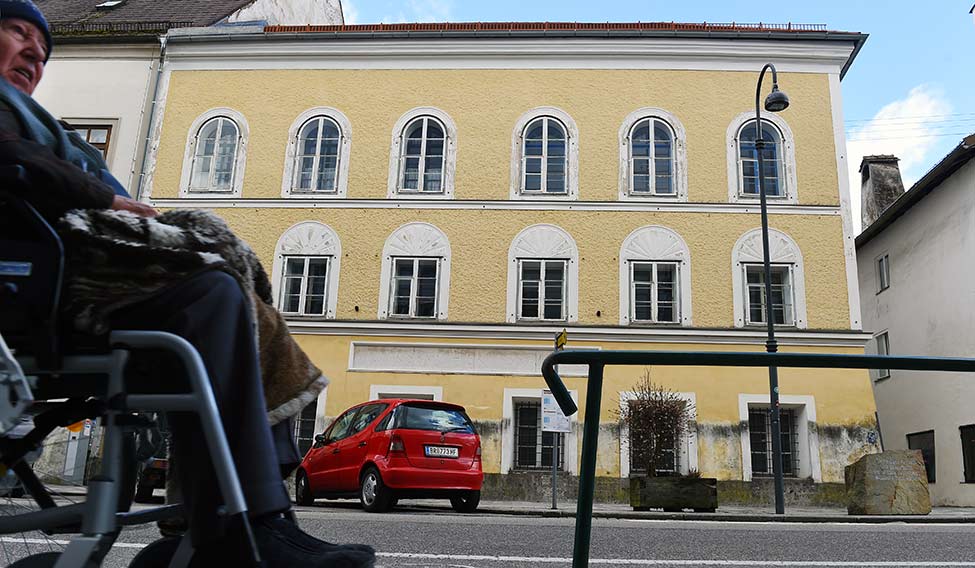Today it seems to me providential that fate should have chosen Braunau on the Inn as my birthplace. For this little town lies on the boundary between two German states which we of the younger generation at least have made it our life work to reunite by every means at our disposal.
Adolf Hitler, Mein Kampf
Like most small towns in Austria, Braunau am Inn, too, is quiet, and quaint. Located on the banks of the Inn on the border with Germany, the town also enjoys the historical significance of being the birthplace of Adolf Hitler. The German dictator was born on the second floor of a guest house here on April 20, 1889. More than a century later, the house remains mired in controversies and legal battles.
While Hitler had spent only a few months of his life here, over the years, it has developed into a major attraction for neo-Nazi followers, much to the discomfort of the Austrian government. Jakob Dachler, whom we met near the house, warned us to exercise caution while taking photographs. “The police are suspicious of people who show extraordinary interest in the house. You must be familiar with what happened to the Hitler lookalike,” said Dachler. He was referring to the arrest of Harald Zen in February after he posed for photographs outside the house in a 1940s-style dress, complete with a haircut and moustache resembling Hitler. Austria has very tough laws against the glorification of Hitler.
As part of this anti-Nazi campaign, the Austrian government chose to take over the 17th century building from its owner Gerlinde Pommer last December. The house was with the Pommers since 1912 except for a brief period during the Nazi rule, when it was bought by Hitler’s private secretary Martin Bormann, on behalf of the Nazi party. The house was returned to the Pommers in the 1950s. To prevent it from turning into a neo-Nazi shrine, the Austrian government took it on lease in 1972 and sublet it to various tenants.
The last tenant, an organisation for disabled people, however, moved out in 2011 after Gerlinde Pommer refused to carry out renovations. The Austrian government, which has been paying nearly ¤5,000 a month as rent for the house, then offered to buy it, but Pommer refused.
Subsequently, in December, the parliament passed a law to expropriate the house, “a seemingly unprecedented decision by a western democratic government,” said Dachler. The government told the parliament that it was taking over the house as “no other historical property exists in Austria that holds such a special, global and political meaning.” The debate on the expropriation bill was conducted late at night, well past the television prime time, clearly indicating the government’s discomfort in handling the delicate issue.
The government, however, appears clueless about what to do with the building. It had set up a 13-member expert committee to study the issue, and according to its recommendations thought of demolishing the building. “The foundations can remain but a new building will be erected. It will be used by either a charity or local authorities,” Wolfgang Sobotka, the Austrian interior minister had announced in October. But it seems the minister had overlooked the fact that the house was in a heritage zone and its demolition was illegal under existing federal laws. “The house is under cultural heritage protection because it is an old house in a historic old town, so this solution seems to be out of the question,” said Constanze Jeitler, a doctoral scholar at the Central European University, Budapest, who specialises on the Hitler home.
Pommer has, however, approached the Austrian constitutional court to declare the expropriation law unconstitutional. The matter is pending before the court.
The locals in Braunau want the debate to be over, but they don’t want the house to be demolished or the facade to be radically changed. But, according to Jeitler, they are also confused about what to do with the building. “Some are in favour of turning it into a documentation and education centre about Nazism and the Holocaust, some want it to be turned into a facility for persons with special needs.” The matter remains in limbo till the constitutional court gives its decision.
Europe’s landscape is dotted with such buildings with intimate links to its past, some of them memorable, some forgettable. But wilfully erasing those memories, even as part of the fight against neo-Nazism, might not be the best course of action.
The example of Berghof, one of Hitler’s headquarters at Obersalzberg in the Bavarian Alps in Germany, is instructive. Hitler used it as a vacation residence and command centre for ten years. Most of it was destroyed during the final phase of World War II, but what remained became a favourite meeting place for the neo-Nazis once the war was over. The exasperated Bavarian government finally chose to dynamite the remains on April 30, 1952—the seventh anniversary of Hitler’s suicide—and posted ‘do not trespass’ signs to keep visitors out.
Yet, the number of visitors actually increased after the demolition, and in no time, it became one of the largest unadvertised tourist attractions in Germany. And, it also turned into a shrine for the neo-Nazis. It finally forced the government to set up the Obersalzberg Documentation Centre near the location, acknowledging its importance. There is a lesson in it for the Austrian government as it awaits the decision of the constitutional court about the Hitler house in Braunau.








